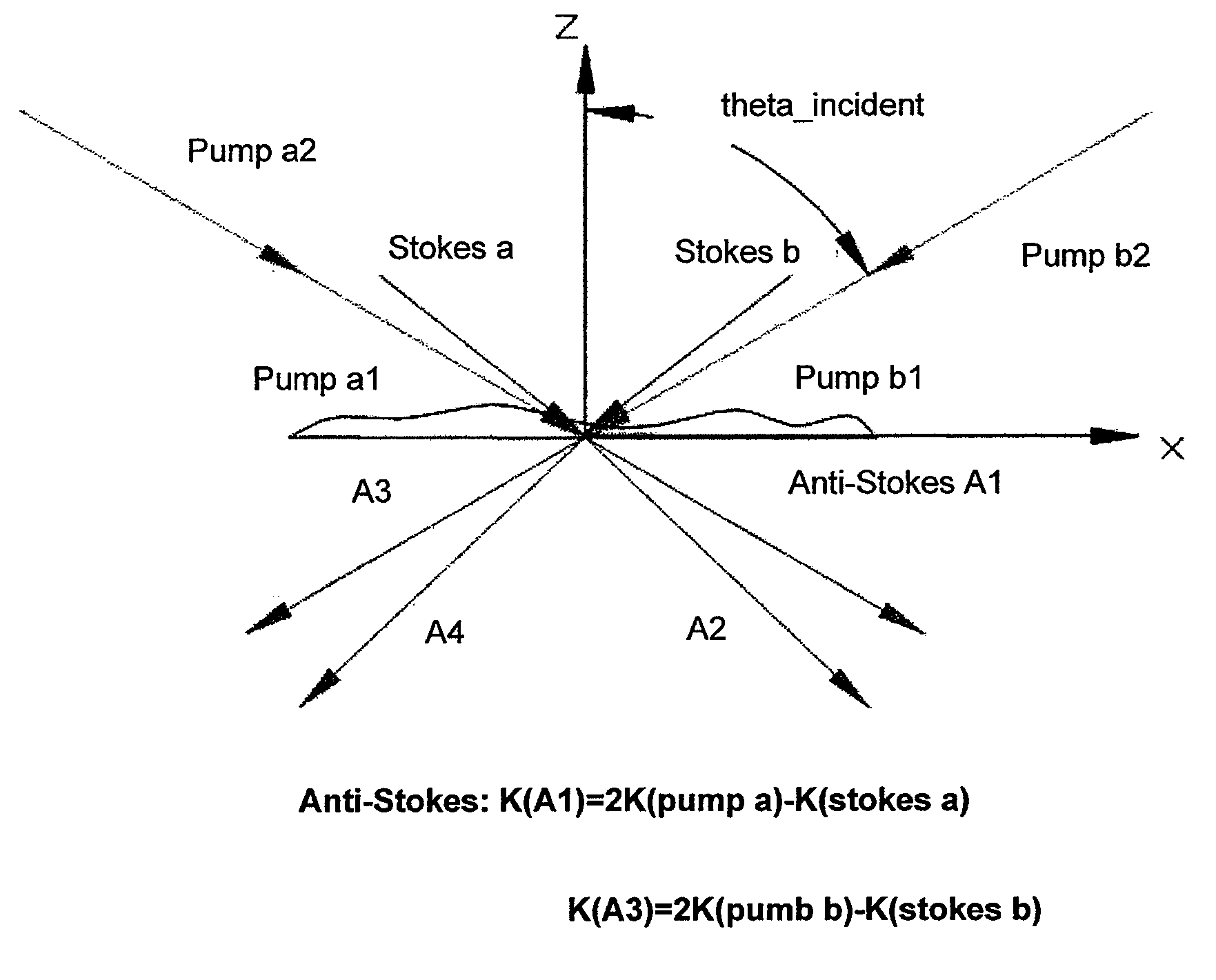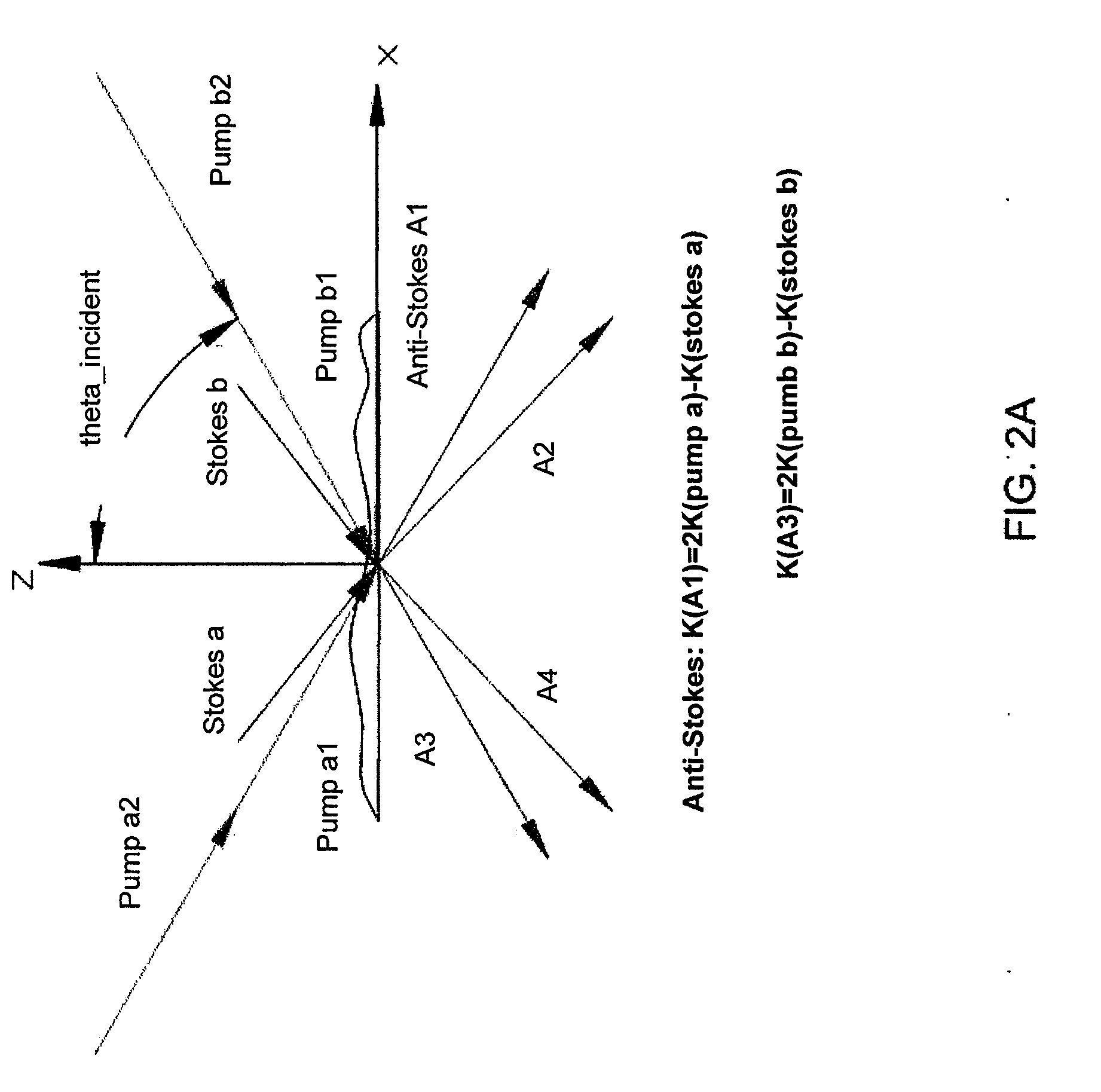Spatial Heterodyne Wide-Field Coherent Anti-Stokes Raman Spectromicroscopy
a wide-field coherent, anti-stokes raman technology, applied in the field of spectroscopy and microscopy, can solve the problems of over-limiting the limits of traditional microscopy, extrinsic markers can disrupt normal biochemical processes, fluorescent stains used to distinguish specific functional groups in cells are unavailable or undesirable, etc., to achieve enhanced spatial resolution and spatial resolution. high
- Summary
- Abstract
- Description
- Claims
- Application Information
AI Technical Summary
Benefits of technology
Problems solved by technology
Method used
Image
Examples
Embodiment Construction
[0024] Coherent Anti-Stokes Raman Scattering, or CARS, is an optical process in which high power laser pulses, known as the pump and Stokes beams, may be incident on a sample, and mixed through the third-order nonlinear susceptibility of the medium, as seen in FIG. 1. Qualitatively, these pulses may interfere in the sample to form a transient diffraction grating. A third beam, referred to as a probe beam, scatters from this induced grating and may be Doppler shifted, producing a fourth beam, referred to as an anti-Stokes beam, a coherently generated pulse which is detected. Energy conservation may be determined by the following:
ωanti-Stokes=ωpump+ωprobe−ωStokes Eq. 1
while photon momentum conservation, or phase matching, requires
kanti-Stokes=kpump+kprobe−kStokes Eq. 2
where ω and k are the photon's angular frequency and wave vector, respectively. Typically pump and probe pulses are taken from the same high-power laser beam, while the Stokes pulse may be generated in a second sourc...
PUM
 Login to View More
Login to View More Abstract
Description
Claims
Application Information
 Login to View More
Login to View More - R&D
- Intellectual Property
- Life Sciences
- Materials
- Tech Scout
- Unparalleled Data Quality
- Higher Quality Content
- 60% Fewer Hallucinations
Browse by: Latest US Patents, China's latest patents, Technical Efficacy Thesaurus, Application Domain, Technology Topic, Popular Technical Reports.
© 2025 PatSnap. All rights reserved.Legal|Privacy policy|Modern Slavery Act Transparency Statement|Sitemap|About US| Contact US: help@patsnap.com



